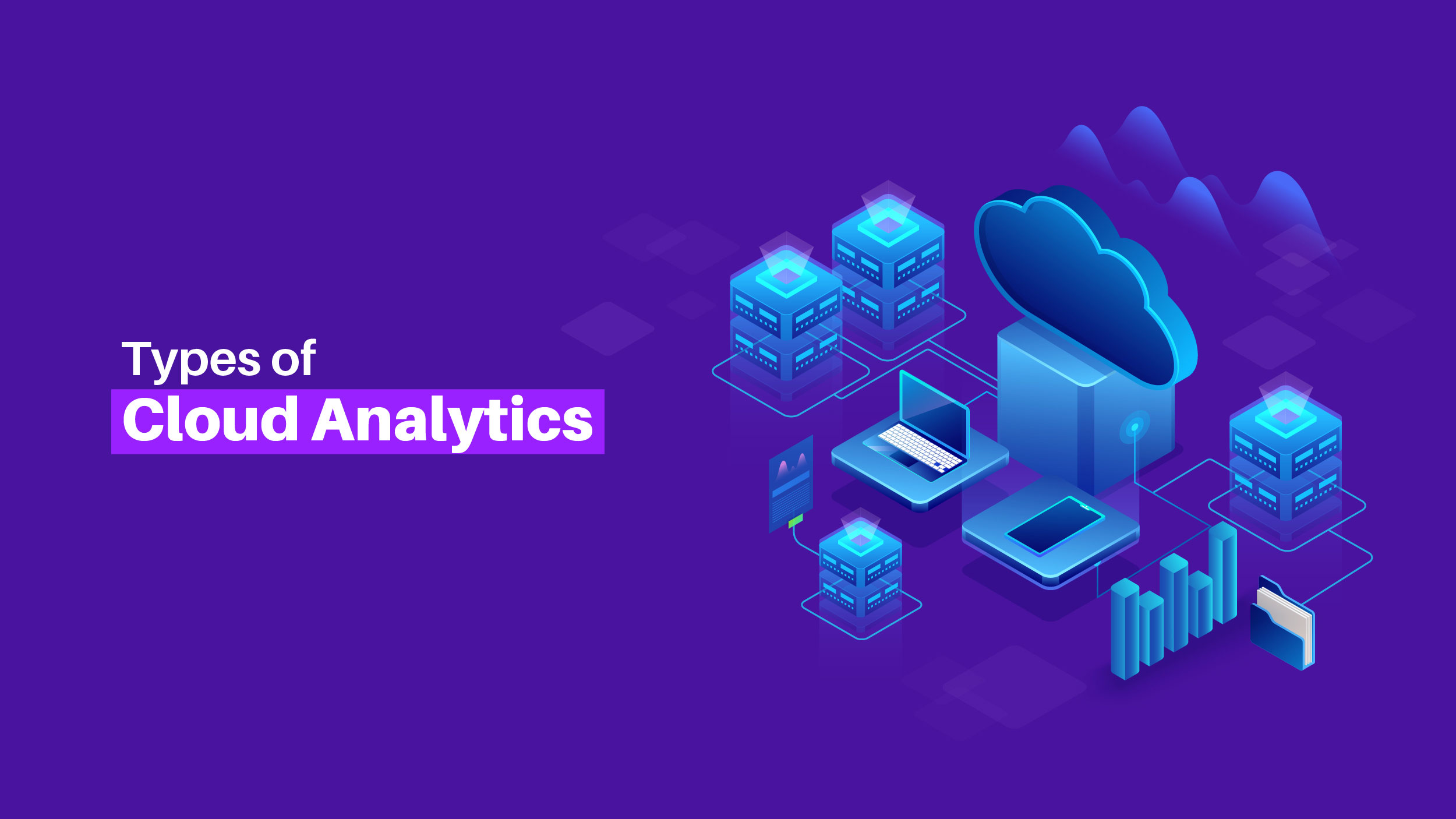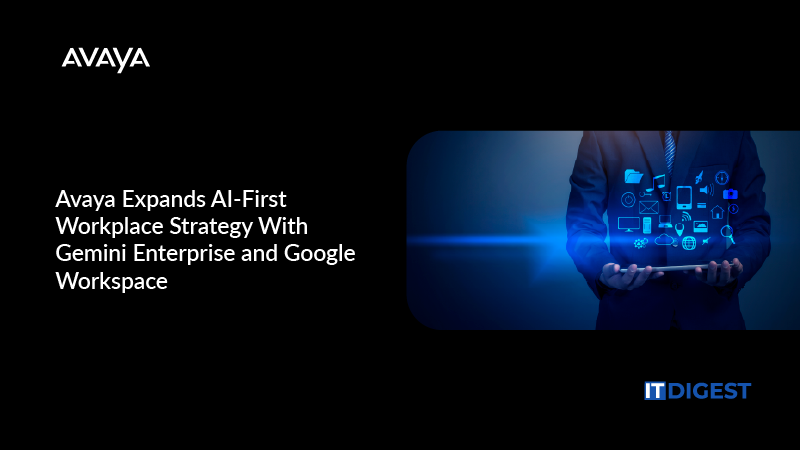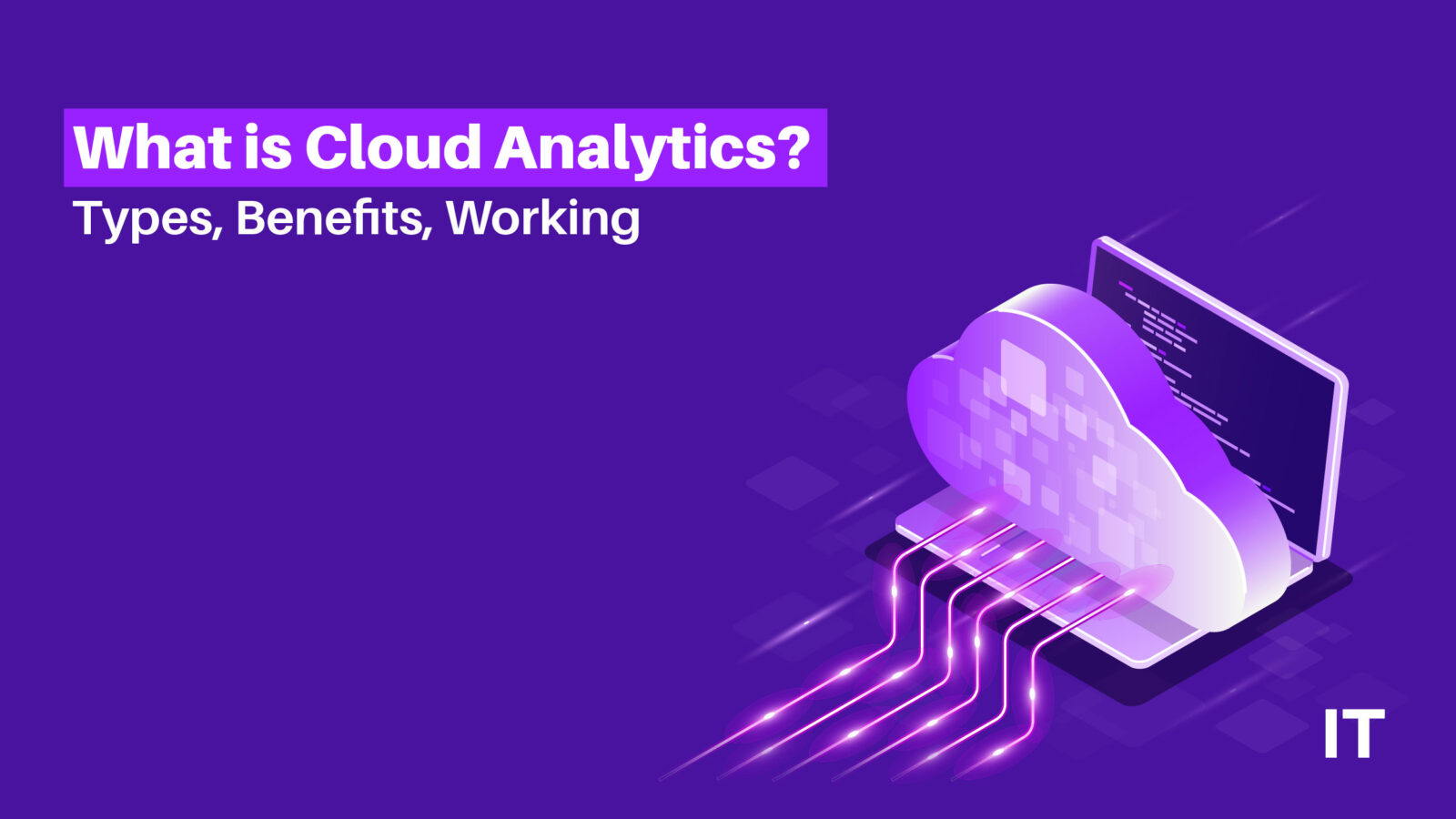Cloud analytics has emerged as a transformative force in the world of data analysis. With the exponential growth of data and the need for scalable computing power, organizations are turning to the cloud to unlock the full potential of their data assets. This article explores how analytics enable businesses to extract valuable insights, make data-driven decisions, and gain a competitive advantage.
What is Cloud Analytics?
Cloud analytics involves shifting data processing and storage operations from on-premises to the cloud, whether public or private. Similar to traditional data analytics, cloud based analytics helps identify patterns, make predictions, and gain business intelligence (BI) insights. However, it extends these capabilities by using cloud technologies and advanced algorithms to handle massive amounts of complex data. This type of analysis often incorporates artificial intelligence (AI), including machine learning (ML) and deep learning (DL) models.
Cloud analytics offers the same functionalities as traditional data analytics but leverages cloud infrastructure for building, deploying, scaling, and managing analytics solutions. This allows organizations to efficiently handle large-scale data operations using third-party cloud services. Also with global IT services spending worldwide reaching 1.3 trillion USD, companies are anticipated to adopt cloud based analytics.
Also Read: Data Governance: A Guide to Streamlining Your Business
How Do Cloud Analytics Work?
Cloud analytics operates much like other cloud computing services, offering scalable resources and powerful analytical tools within a public or private cloud. Users can access these services on a subscription-based or pay-as-you-go model.
Here’s a breakdown of how cloud based analytics functions:
- Scalable Resources and Tools: It provides flexible, scalable resources that can be adjusted based on your needs. This includes access to advanced analytical tools and platforms.
- Managed Services: The cloud provider handles the maintenance and management of the analytics application or service. This allows users to focus on generating insights without worrying about infrastructure issues like scaling, performance, or reliability.
- Deployment Models: Organizations can fully transition their data analytics processes to the cloud or adopt a hybrid model. In a hybrid setup, certain elements remain on-premises to reduce costs or enhance performance, while other components move to the cloud.
- Data Storage and Sources: Businesses might use a cloud-based enterprise data warehouse to store vast amounts of data from various sources, both on-premises and cloud-based. This centralized storage facilitates efficient data management and analysis.
- Analytics Use Cases: Cloud analytics tools support diverse use cases, including:
- Cloud Reporting: Generating reports from data stored in the cloud.
- Streaming Analytics: Real-time data analysis as it flows into the system.
- Predictive Analytics: Using historical data to make future predictions.
- Machine Learning: Implementing ML models to discover patterns and insights.
- Embedded Analytics: Integrating analytics and dashboards into other applications and systems.
By leveraging these capabilities, organizations can effectively analyze data, gain actionable insights, and drive informed decision-making.
Types of Cloud Analytics
 In cloud computing, cloud based analytics can be categorized into three primary types based on the environment: public cloud, private cloud, and hybrid cloud.
In cloud computing, cloud based analytics can be categorized into three primary types based on the environment: public cloud, private cloud, and hybrid cloud.
Public Cloud Analytics:
- Environment: Hosted on a public cloud with a multitenant architecture, where multiple organizations share the same resources and services (e.g., virtual machines, data storage, data processing).
- Advantages: Cost-effective, easily scalable, and managed by the cloud provider.
- Security: Each organization’s data remains isolated, ensuring privacy despite the shared infrastructure.
Private Cloud Analytics:
- Environment: Hosted in a private cloud, accessible by a single organization.
- Location: Can be located on-premises in the organization’s data center or offsite on dedicated servers provided by a third party.
- Advantages: Enhanced data security and privacy.
- Disadvantages: More expensive to scale and maintain compared to public cloud solutions.
Hybrid Cloud Analytics:
- Environment: Combines public and private cloud environments.
- Usage: Public cloud for non-sensitive data processing and storage; private cloud or on-premises systems for sensitive data with stricter governance.
- Advantages: Flexible and adaptable, providing analytics capabilities across all environments while ensuring compliance and data sovereignty for sensitive information.
Benefits of Using Cloud Analytics
Let’s explore the key drivers behind companies’ migration toward cloud-based analytics:
- Cost Efficiency and Swift Returns: By adopting cloud-based analytics, organizations mitigate the risk associated with upfront investments in hardware for on-premises servers. Moreover, eliminating the need for in-house server and software maintenance expertise further reduces operational expenses.
- Empowering Remote and Hybrid Workforces: Today’s workforce, whether remote, hybrid, or traditional, requires seamless access to interactive analytics from any location and device, facilitating agile decision-making across organizational boundaries.
- Streamlined Collaboration: Leading cloud based analytics platforms offer features such as snapshot sharing, contextual commentary, and tagging for discussions, fostering real-time and asynchronous collaboration, thereby enhancing decision-making processes.
- Continuous Innovation: Cloud based analytics solutions automatically handle updates and upgrades, sparing organizations the hassle and costs associated with ongoing maintenance of on-premises servers, ensuring access to the latest capabilities without disruption.
- Scalable Performance: Unlike traditional setups where scaling requires new hardware purchases, cloud based analytics services offer the flexibility to adjust resources based on demand fluctuations. This scalability enables efficient resource allocation, especially during peak data processing periods.
- Enhanced Reliability and Security: SaaS environments mitigate data security risks by minimizing manual server configurations and adhering to rigorous security certifications, ensuring robust protection against vulnerabilities and unauthorized access.
- Unified Data Management: Cloud data analytics consolidates data from disparate sources such as Content Management Systems (CMS), Enterprise Resource Planning (ERP) systems, and marketing automation platforms, providing a comprehensive view of the organization’s operations and optimizing insights across all departments.
How to Choose the Right Cloud Analytics Platform for Your Business?
 Some of the best cloud based analytic tools available are Zoho, Tableau, Spotfire, etc. Before committing to a purchase, consider the following crucial factors:
Some of the best cloud based analytic tools available are Zoho, Tableau, Spotfire, etc. Before committing to a purchase, consider the following crucial factors:
- Scalability: A reliable cloud based analytics platform should effortlessly adapt to your business’s growth trajectory and evolving data demands. Opt for platforms offering flexible pricing models, allowing you to scale resources based on usage patterns.
- Security: While data encryption during transit is standard among cloud providers, not all offer robust measures for data at rest. Prioritize platforms that ensure end-to-end encryption, safeguarding data integrity both during transmission and storage.
- Real-time Integration: Seamless integration with existing organizational systems is paramount for keeping insights current and relevant. Choose a cloud based analytics platform that offers real-time integration capabilities, minimizing lag time and facilitating agile decision-making processes.
- Analytics Features: Identify your company’s unique business metrics and objectives, and select a platform equipped with comprehensive analytics functionalities tailored to your specific needs. Customizable analytics tools ensure accurate measurement and analysis of key performance indicators.
- Responsive Interface: With the increasing reliance on mobile devices for data analysis, prioritize platforms with responsive interfaces optimized for smartphones and tablets. Ensure that the platform’s performance remains smooth and efficient across diverse devices, enabling users to access insights on the go without encountering usability issues.
Key Takeaway
Cloud analytics has revolutionized the way organizations derive insights from their data. By leveraging the scalability and computing power of the cloud, businesses can efficiently process and analyze vast amounts of data. Furthermore, it also offers the flexibility and agility needed to uncover valuable patterns, trends, and correlations that drive informed decision-making.
































